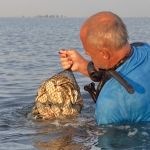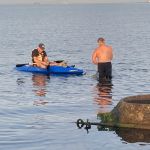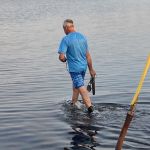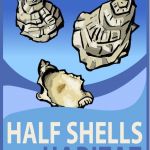Great South Bay Oyster Project
Photo Gallery
Recent Progress
Volunteer
Habitat Restoration

Habitat Restoration
We advocate for healing the creeks that feed our bay, for bay-friendly yards, for helping to return a shellfishing industry to the Great South Bay, and for the deployment of modern wastewater treatment technologies to address the problems caused by 500,000 cesspools and septic tanks, as well as the 197 large scale septic systems in malls, apartment complexes and locally.
Volunteer
Lend a hand! Join our Oyster Project Team and help revive The Great South Bay.
Partnering With Oyster Growers
Of course, nothing happens without cleaner water. That is why getting rid of our cesspools and septic tanks, healing our creeks, tackling runoff, and practicing natural lawn care is so important.
Please contact us with any suggestions you may have. You can also donate our efforts. We want to apply the latest techniques in aquaculture to revitalize our bay, our economy and our local culture.
We advocate for healing the creeks that feed our bay, for bay-friendly yards, for helping to return a shell fishing industry to the Great South Bay, and for the deployment of modern wastewater treatment technologies to address the problems caused by 500,000 cesspools and septic tanks, as well as the 197 large scale septic systems in malls, apartment complexes and locally.
Where You Can Get Fresh, Long Island Blue Point Oysters
- Neguntatogue Oysters (Lindenhurst) – call or text Keith & Nicole at 631-275-8046
- Blue Island Oysters (Sayville)- Call Chris at (631) 563-1330 for availability
- Maris Stella Oysters (Captree) – call or text Sixto at 516-939-5545
- Little A’s (Bay Shore) – call or text Michael at 917-526-1900
- Red Tiger (West Islip) – call or text Lou at 646-228-6273
The Making Of An Oyster Sanctuary
Site Evaluation
Establishing the Sanctuary
Enhancing and Measuring for Success
Recent Progress On Habitat Restoration
Let’s Build A Web Based Environmental Map of Long Island Together
Save The Great South Bay has just launched a Kickstarter Campaign to raise money for a web-based crowdsourced environmental map of Long Island. Here is a list of the sorts of things this map will allow us to do: 1. Nature photographers will be able to post their...
Can Long Island Be Saved? — Part XII: 2014 — A Watershed Year?
This December finds Long Island’s environmentalists, those in The Nature Conservancy, The Citizen’s Campaign for the Environment, The Group For the East End, The Pine Barrens Society, and the 100+ local organizations in The Long Island Clean Water Partnership in a state of wonder and exhaustion: Wonder because politicians and policy makers at all levels of government and across the political spectrum are standing together. They are all in agreement with the science that shows that Long Island is in a water quality / water pollution crisis and that something must be done immediately and on a large scale to address it.
Poisoning The Well: What’s Wrong With The Water in East Hampton? More Than You Might Have Imagined
What makes Georgica Pond so interesting is the possibility that motivated residents, top scientists and attentive local officials could be at the forefront of reversing the symptoms of the nutrient pollution that has become an island-wide, and arguably a world-wide, problem.
Can Long Island Be Saved? Part IX — The Following Beaches Will Be Closed This Weekend…
This what happens on Long Island in the warm months every time it rains. And it gets worse by the year. Before 1984, we did not have algal blooms around Long Island. Headlong development has caught up with us. What led us to think that we could put 500,000 septic tanks / cesspools in the low lying sand of Long Island and not suffer some consequences? That said, we had no definitive scientific link between nitrogen from our septic tanks and the explosion of algal blooms now threatening almost all our waters until 2005.
Can LI Be Saved? VIII – IBM Offers Roadmap to A Sustainable Future for LI While in Albany Its Business As Usual
As the bill in Albany died, a plan on Long Island was born. Now it is truly up to Governor Cuomo’s ‘task force’ on Water Quality and Coastal Resiliency to hold the last of its four public meetings and offer its recommendations. Will Governor Cuomo have the vision and drive to move past the Albany nonsense to protect and restore the water sole source supply of drinking water for 3 million Long islanders, and the $5 billion dollar per year cash cow coastal economy of New York State? Will Suffolk County Executive Steve Bellone step up and make the sweeping agency reforms recommended by the expert panel from IBM Smarter Cities Program? If so – then best of times indeed. Between IBM and the many dozens of experts in consultation now on water quality issues, we have the very best science in the world at hand to address our problems. We need to leverage this fact. “We have to.”
Contact Your New York State Senators And Assemblymen Immediately — They Must Pass The Long Island Water Quality Control Act
The State Legislature is only in session for one more day up in Albany. There is only a day left to bring to the floor (and pass!) The Long Island Water Quality Control Act A.9788A/S.7804. The future of Long Island’s bays, rivers and ponds depend on it. Our drinking water depends on it.
The bill establishes pollution standards for residents, businesses, and agriculture , standards we are going to need in place if we are to save our waters and build a sustainable Long Island.
There are of course certain constituencies who don’t want to see this bill passed because it would force them to change how they do business — what they can put on the ground, in the air, in the water, what they can build where, what new water quality regulations they’d need to follow.
But two things about building a sustainable Long Island :





















